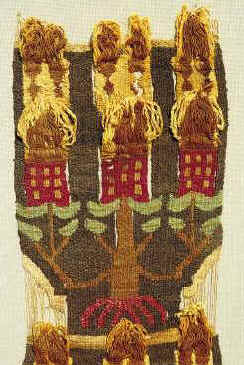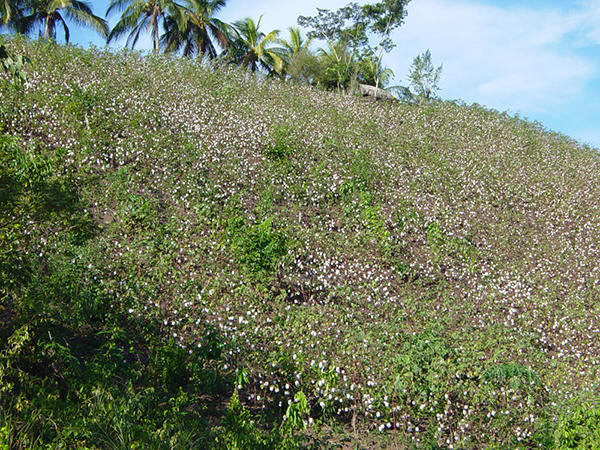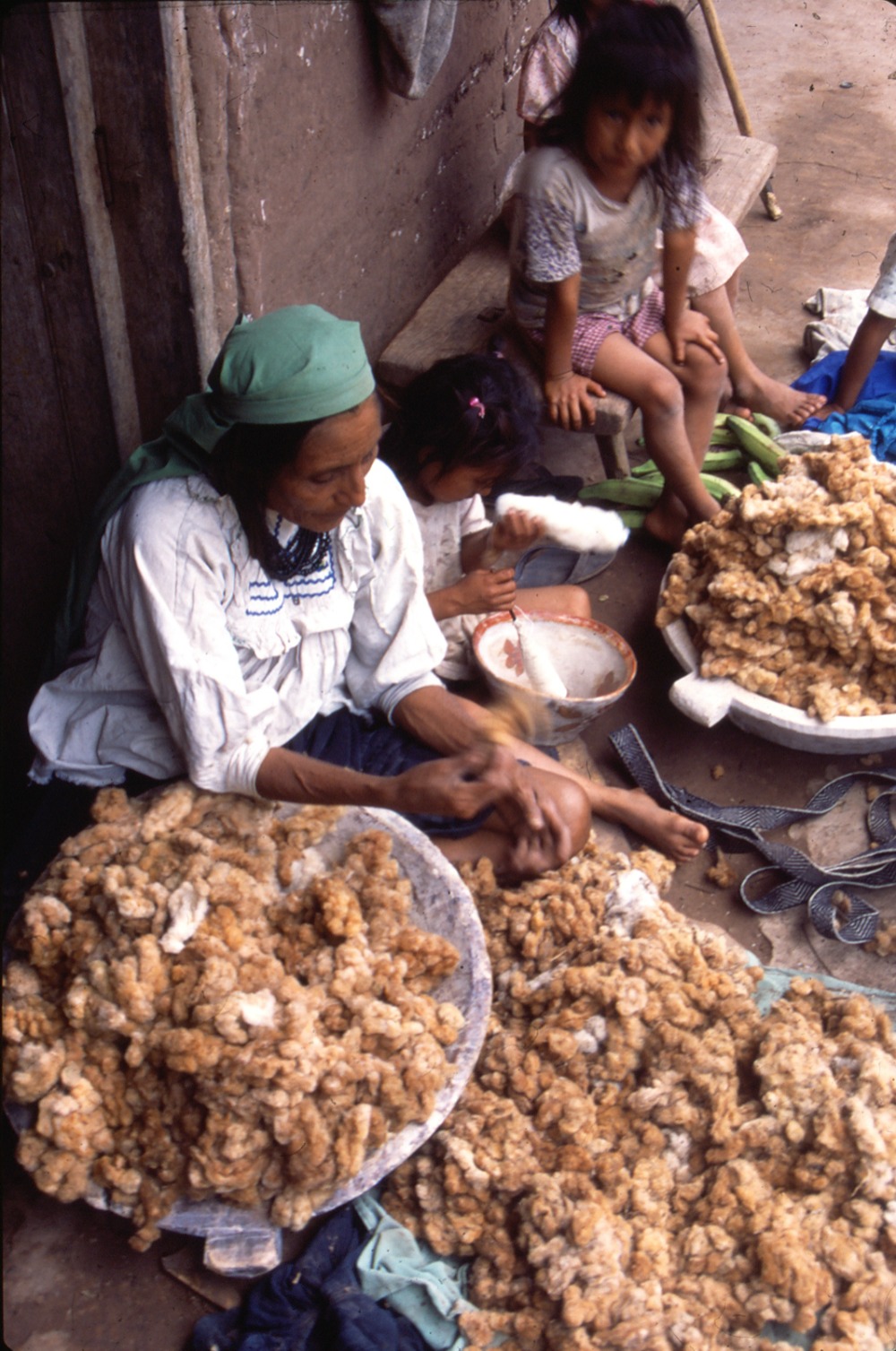
The story of cotton in its resplendent tones began some 5,000 years ago in the Andes. It’s revival today draws on stocks first developed and cultivated by Indians in South and Central America.
After disappearing for about a century, naturally coloured cotton suddenly reappeared as a fashion item in the early 1990's. Behind the scenes, Dr James M. Vreeland, Jr. had spent the previous 20 years seeking all the information that he could find on naturally coloured cotton. He states: “Ultimately, the people who taught me the most were the Mochica Indians, who, some 2,000 years ago, cultivated cottons of myriad hues and who had quietly maintained some of these cultivars.”
‘Quietly maintained’ is no mean feat as it was discovered, beginning in 1931, that the Peruvian government had issued a series of decrees and laws aimed at destroying perennial, pigmented forms of native cotton in an effort to protect the all-white varieties that were commercially viable.
Since 1986, the Native Cotton Project of Peru, with the support of Peruvian government agencies, UNESCO, international organisations and private foundations, has pioneered the documentation and recovery of native cotton cultivation in the high jungle of northern Peru. The resuscitation of this ancient tradition offered rural farmers an alternative crop to grow than the coca plant (coca leaf production has soared while native cotton production has fallen), but it has also required governmental reversal of the policy to eradicate native cotton.
What is now called Pima cotton developed from a South American progenitor (most probably G. barbadense). This strain originally produced long, strong lint with a golden-brown colour. It was interbred with local plants to yield new commercial selections. Native cotton now occurs in a variety of unique natural colors, including white, beige, brown, chocolate and mauve.

Indian farmers cultivate coloured cotton using pre-Columbian farming techniques and totally organic methods. These farming techniques are used for sustained cotton harvesting and environmental resource management, traditional water management systems have been re-introduced along with quality seed selection and biological pest control methods. Coloured cotton is organic and drug-free, no pesticides herbicides, artificial growth regulators, defoliants or other agro-chemicals are used to grow or colour these products.

Today Indian descendants of ancient Peruvian cultures still harvest, gin and spin by hand as it has been since the domestication of cotton in Peru over 4,500 years ago. They are given logistical and technical support when needed, and a fair price is paid for the cotton fibre at harvest.
There are many revival efforts that resemble those of Pakucho and the Native Cotton Project. In the hills of Santander in Colombia, the highlands of Guatemala and in Bolivian Oriente, the Chiquitano Indians hope to revive organic cotton cultivation. What an amazing alternative to white cotton, which when harvested, is usually bleached and then dyed with a whole host of other chemicals.
The future of coloured cotton looks bright in many places. Not only will establishing new and sustainable markets for this fibre encourage further conversion of fields from coca leaf to native cotton, but it will also reduce the high percentage of usage of insecticides and pesticides by cotton farmers.
Peruvian yarn is manufactured in socially responsible and inspected facilities, certified Fair Trade and organic by Control Union/SKAL, which carries out annual inspections.
All images courtesy of Dr. James M. Vreeland, Jr. Naturtex
